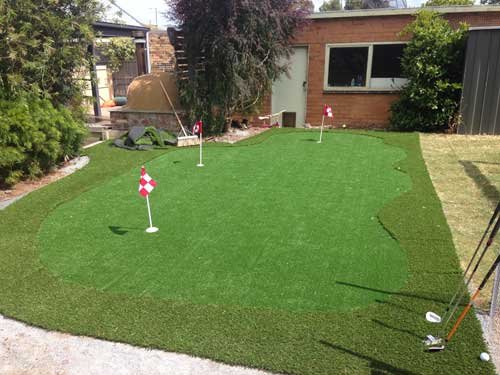When you install a chimney liner, you’re investing in the safety and performance of your fireplace system. But many homeowners wonder — do chimney liners need sweeping like traditional chimneys do? The short answer is yes. Even with a liner in place, soot, creosote, and debris can build up over time, posing serious fire risks.
In this guide, we’ll explain why sweeping your chimney liner is essential, how often it should be done, and how experts like AAA Air Duct Cleaning can help keep your system clean and efficient.
What Is a Chimney Liner?
A chimney liner is a protective layer installed inside your chimney flue. It serves several key purposes:
-
Protects masonry: It prevents heat and corrosive gases from damaging the chimney walls.
-
Improves draft: It enhances airflow, allowing smoke to exit efficiently.
-
Increases safety: It minimizes the risk of fire by containing combustion gases.
Common materials for liners include stainless steel, aluminum, clay tiles, and cast-in-place concrete. When you install a chimney liner, it not only boosts performance but also ensures your chimney meets local safety codes.
However, even the most durable liner requires regular maintenance — especially sweeping.
Why Chimney Liners Need Sweeping
You might think a liner reduces the need for cleaning. But that’s a common misconception. Here’s why chimney liners still need regular sweeping:
-
Creosote Buildup: Burning wood releases tar-like substances that stick to the liner walls. Over time, this buildup can ignite and cause a dangerous chimney fire.
-
Soot and Ash Accumulation: Even small amounts of soot reduce airflow and make your heating system work harder.
-
Animal Nests and Debris: Birds, leaves, and small animals can block your liner, leading to smoke backup.
-
Moisture and Corrosion: Without cleaning, moisture mixes with soot and acids, eating away at the liner material.
Cleaning helps prevent these issues and keeps your fireplace running safely and efficiently.
How Often Should You Sweep a Chimney Liner?
Experts recommend sweeping your chimney liner at least once a year — typically before the heating season begins. However, the frequency can depend on several factors:
-
Type of fuel: Wood-burning fireplaces create more creosote than gas or oil systems.
-
Usage frequency: The more you use your fireplace, the more often you’ll need cleaning.
-
Liner material: Stainless steel liners resist corrosion better but still require annual cleaning.
-
Local climate: Humid or rainy environments can accelerate soot and residue buildup.
If you notice smoke coming back into your living room or a strong burning odor, it’s time to schedule a cleaning.
Signs Your Chimney Liner Needs Sweeping
It’s easy to miss early warning signs of a dirty liner. Here’s what to look out for:
-
Black flakes or powder around your fireplace.
-
Reduced fireplace efficiency or poor draft.
-
Strong smoky odor even when the fireplace isn’t in use.
-
Visible soot buildup on the liner walls.
-
Difficulty starting or maintaining a fire.
If you spot any of these, call professionals like AAA Air Duct Cleaning to inspect and sweep your chimney liner immediately.
How Professionals Sweep Chimney Liners
Chimney liner sweeping isn’t just about brushing out soot — it requires proper tools, experience, and safety precautions.
Here’s how professional cleaners do it:
-
Inspection: The technician checks for cracks, rust, or blockages in the liner using a camera inspection.
-
Preparation: The area around the fireplace is covered to protect your home from dust and debris.
-
Sweeping: Using flexible rods and nylon or steel brushes, the cleaner scrubs the liner walls thoroughly.
-
Vacuuming: A high-powered HEPA vacuum collects all loosened soot and dust.
-
Final Inspection: The liner is checked again to ensure it’s clean and damage-free.
AAA Air Duct Cleaning uses advanced tools and techniques to clean chimney liners without scratching or damaging them — something DIY methods often fail to guarantee.
DIY vs. Professional Sweeping
Some homeowners try to clean their chimney liners themselves, but this approach can be risky. Let’s compare:
DIY Sweeping:
-
May save money initially.
-
Requires proper brushes and ladders.
-
Hard to detect hidden creosote layers.
-
Can damage the liner if done incorrectly.
Professional Sweeping:
-
Uses specialized tools and cameras.
-
Ensures complete creosote removal.
-
Identifies damage before it worsens.
-
Follows safety and fire prevention standards.
Hiring professionals like AAA Air Duct Cleaning ensures your chimney is not just clean but safe and efficient.
Benefits of Regular Chimney Liner Sweeping
Sweeping your chimney liner regularly offers more than just cleanliness. Here are the main benefits:
-
Fire Prevention: Removing creosote reduces the risk of chimney fires.
-
Improved Airflow: Clean liners allow for a better draft, reducing smoke buildup indoors.
-
Energy Efficiency: Your fireplace heats better with a clean flue.
-
Extended Liner Lifespan: Regular maintenance prevents corrosion and damage.
-
Better Indoor Air Quality: Keeps harmful smoke and gases from leaking into your living space.
Maintaining your chimney liner is just as important as installing it. With consistent care, it will last for decades.
How AAA Air Duct Cleaning Can Help
AAA Air Duct Cleaning doesn’t just handle air ducts — they specialize in chimney liner services, too. From installation to sweeping and repair, their technicians ensure your entire ventilation system is safe and clean.
Their Install Chimney Liner service includes:
-
Professional assessment and measurement.
-
Safe installation of stainless steel or aluminum liners.
-
Proper sealing and insulation for energy efficiency.
Their chimney cleaning service includes:
-
Full camera inspection.
-
Creosote and soot removal.
-
Moisture and corrosion prevention.
With AAA Air Duct Cleaning, you can rest assured your fireplace will run safely and efficiently all year round.
Preventive Tips to Keep Your Liner Clean
You can reduce buildup and extend the time between sweeps with these habits:
-
Burn only dry, seasoned wood. Wet wood creates more creosote.
-
Avoid paper or trash burning. They leave sticky residues.
-
Use a chimney cap. It keeps debris and animals out.
-
Schedule yearly inspections. Even if you don’t use your fireplace often.
-
Check for odor or smoke leakage. These may signal blockage.
These simple steps help maintain the health of your chimney liner and prevent expensive repairs.
Conclusion
So, do chimney liners need sweeping? Absolutely — just like traditional chimneys. Regular sweeping removes creosote, prevents blockages, and ensures safe operation.
When you install chimney liner, you’re protecting your home. But to keep that protection effective, maintenance is key. Hiring professionals like AAA Air Duct Cleaning ensures your liner stays clean, efficient, and long-lasting.





